World Oceans Day through Books: The Roots of Modern Ichthyology
In the context of human history, ocean exploration is a relatively recent occurrence. Even by the 19th century, human knowledge of the oceans was still limited, and the flora and fauna that called the sea home, particularly within the depths, remained virtually unknown. Publications by individuals such as Olaus Magnus and Conrad Gessner in the mid-16th century represent some of our first attempts to systematically aggregate and describe biodiversity and many marine species. Much of this published information, however, was based on accounts from antiquity or spotty, second-hand narratives from sailors, hence the representation of many mythical creatures, such as the Kraken, hydra, or sea serpent, as real species.
 |
| The hydra, as depicted by Conrad Gessner in Historia Animalium. 1551-58. http://biodiversitylibrary.org/page/42166090. |
But over the centuries, human exploration increased, and with it, our knowledge of the oceans and marine biodiversity. This knowledge and a record of our scientific discoveries are captured within the pages of natural history literature.
In honor of World Oceans Day on June 8, we’ve compiled a collection of publications that represent important milestones in the progress of marine bioscience research and ocean exploration. These publications will be presented in a three-part series. But while we know significantly more today than we did in the 16th century (few today, for example, would argue that the Hydra is a real species), we still have a great deal to learn about an environment that covers almost 71% of the Earth’s surface. Oceans may in fact be our true final frontier.
The Start of Modern Ichthyology: De Aquatilibus
By the mid-1500s, the birth of modern zoology, with attempts to bring together all available knowledge about Earth’s biodiversity in a systematic way, was underway. Conrad Gessner’s Historia Animalium, published in 1551-58, is in fact considered the beginning of modern zoology. This work, however, like many others of its time, is not based solely on personal observation and analysis but instead includes much inherited knowledge from ancient naturalists like Aristotle and Pliny. The result is the depiction of both mythical and authentic species.
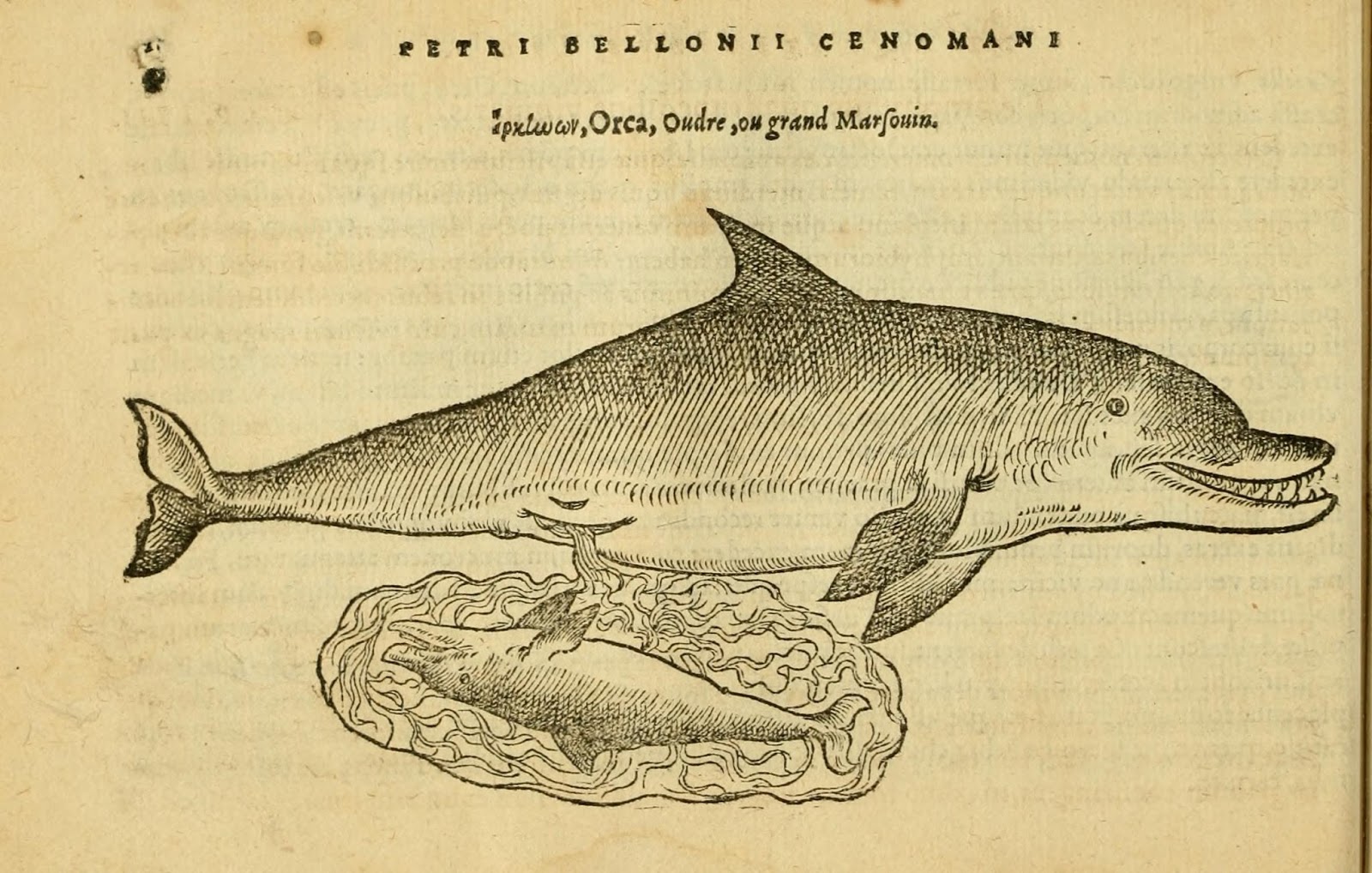 |
| Belon portrayed many dolphins, their embryos, and reproductive anatomy within De aquatilibus, marking the beginning of modern embryology. Belon, Pierre. De aquatilibus. 1553. http://biodiversitylibrary.org/page/4770162. |
Around the time of Gessner’s publication, Pierre Belon, a French naturalist who started practice as an apothecary, studied medicine, and later undertook many travels that fueled his interest in natural history, published De aquatilibus (1553), describing and illustrating over 100 fish, sharks, and rays, as well as many marine mammals. Belon details the outward characteristics of the species he depicts and classifies his divisions of aquatic animals by size, skeletal structure, mode of propagation, number of limbs, form of the body, and habitat. As such, De aquatilibus is considered by many to be the beginning of modern ichthyology. The work also includes detailed descriptions of dolphins, their embryos, and reproductive anatomy, and thus is also considered the start of modern embryology. In a later work, Belon also illustrated comparisons between human and bird skeletons, a pioneering advancement in comparative anatomy.
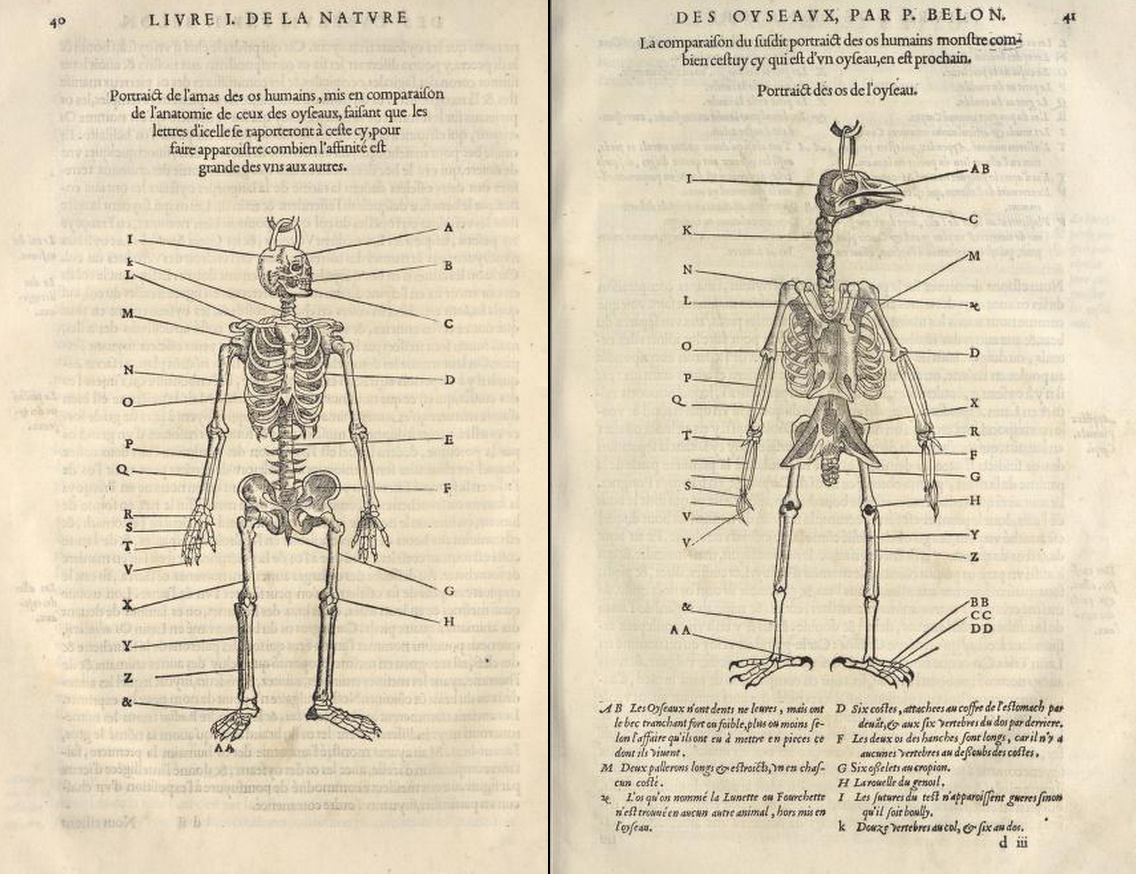 |
| Skeleton of a bird and human side-by-side, a pioneering advancement in comparative anatomy. Belon, Pierre. L’histoire de la natvre des oyseavx. (1555). http://biodiversitylibrary.org/page/43989554. |
Belon stressed the importance of observation in scientific study and communication, chastising those who simply relied on and proliferated historic accounts stemming from the titans of antiquity. However, despite this charge, Belon does include some fantastical creatures within his book, including the “sea monk” and “web-footed horse of Neptune.”
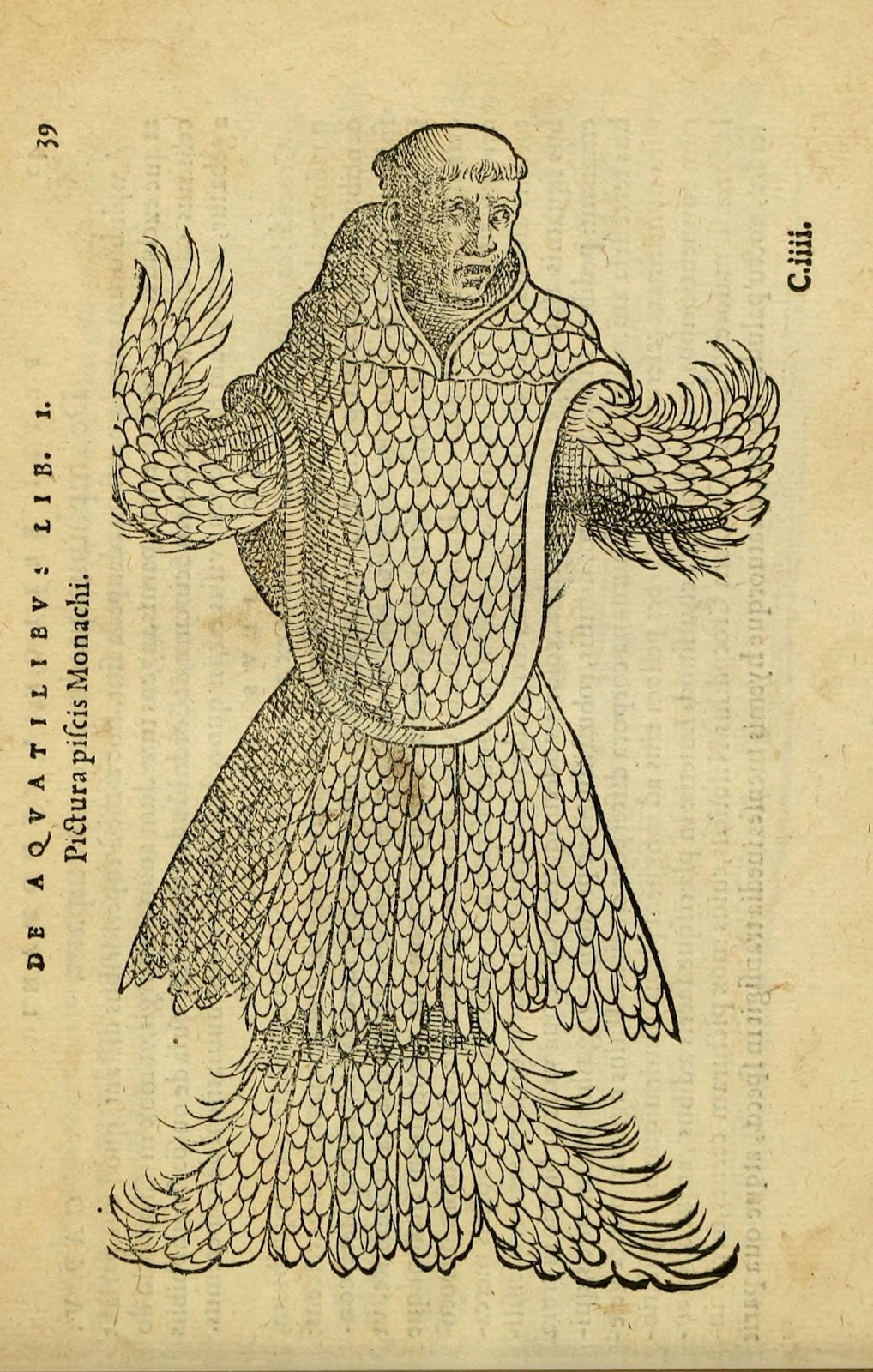 |
| Mythical “sea-monk,” possibly based on a stranded squid. Belon, Pierre. De aquatilibus. 1553. http://biodiversitylibrary.org/page/4770183. |
Sadly, Belon’s life was cut tragically short. He was murdered by unknown assailants in the Bois de Boulogne in 1564 at the age of 47.
Observation over Authority: Aquatilium Animalium
Belon was not alone in his directive to base scientific study on observation rather than the authority of antiquity. Italian physician Hippolito Salviani, whom Belon met during his travels in Rome, took a marked interest in natural history, particularly ichthyology. Salviani, in fact, proclaimed that he would not publish anything that he himself had not observed and ascertained to be true.
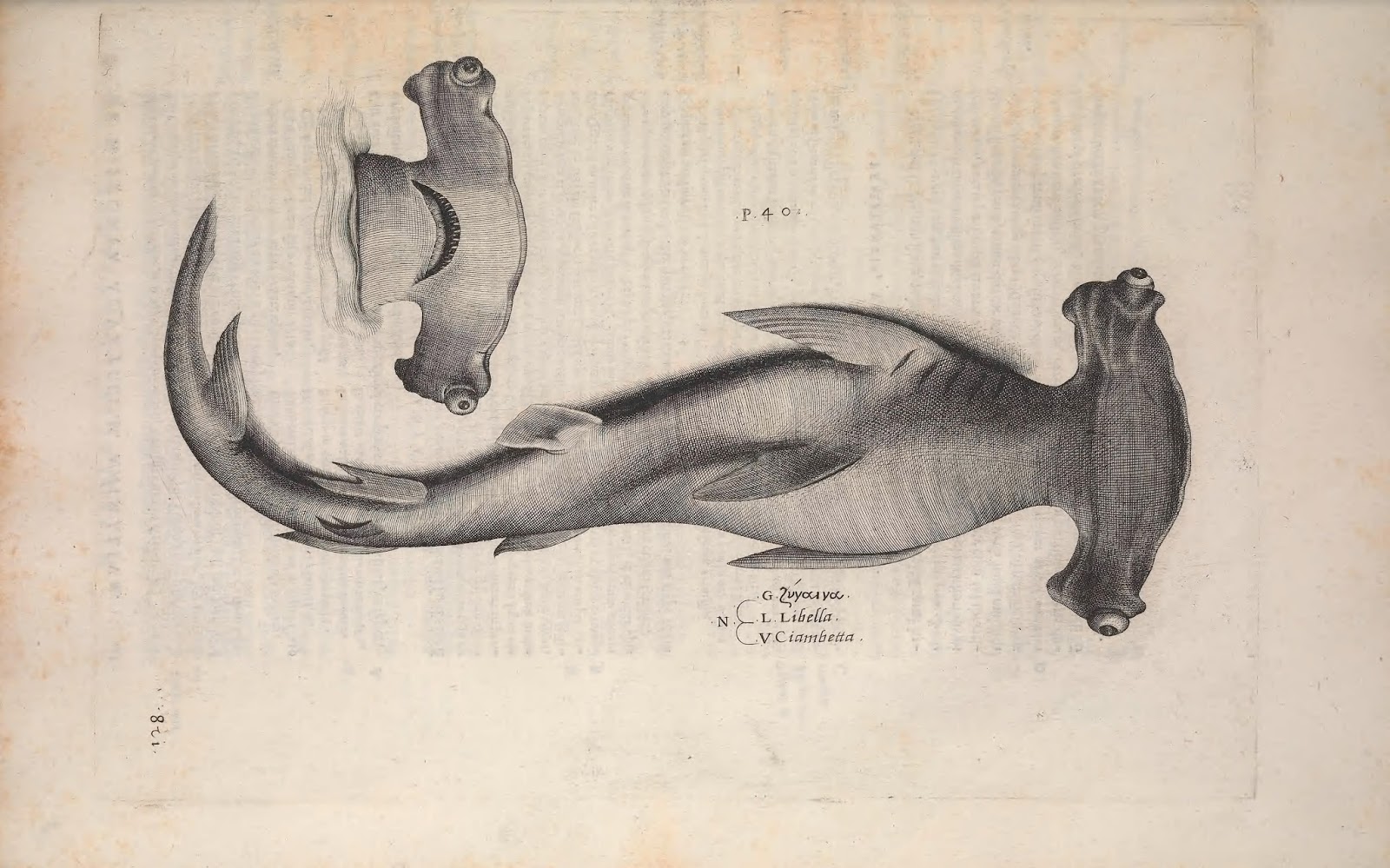 |
| Smooth hammerhead shark (Sphyma zygaena). Salviani, Hippolito. Aquatilium Animalium Historiae. 1554-58. http://biodiversitylibrary.org/page/44715878. |
In the mid-1500s, Salviani worked to produce his own masterpiece on fishes. His 1554-58 Aquatilium Animalium Historiae includes two folio volumes and eighty-eight full-page copper engravings and describes only those fish species that he personally observed and studied. He gathered many of his specimens from local fishermen and markets. His descriptions not only include external characteristics but many additional aspects such as “habitat, behaviors and reproduction, methods of capture, nutritional and medicinal usages, and often even cooking techniques” (Stiassny, 5). Salviani’s employment of detailed copper engravings resulted in illustrations with a much more life-like appearance than the woodcuts utilized by his peers, including Belon. Salviani was also the “first to narrow the concept of ‘fish’ from a broad notion embracing all marine animals [as was the custom of the time] to instead include only the bony and cartilaginous fishes” (Stiassny, 5). As such, Salviani and Belon are often considered the two founding fathers of ichthyology.
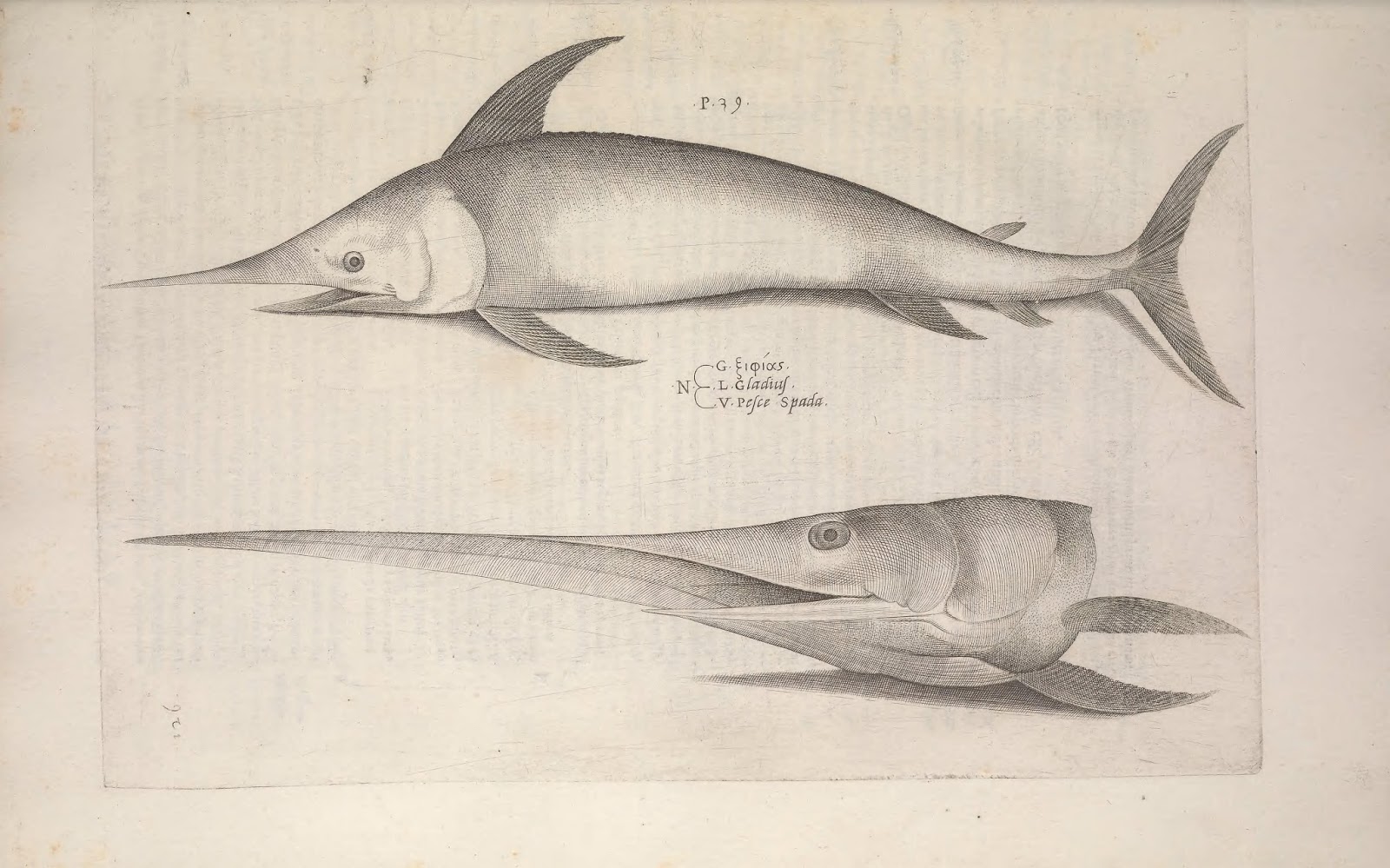 |
| Swordfish (Xiphias gladius). Salviani, Hippolito. Aquatilium Animalium Historiae. 1554-58. http://biodiversitylibrary.org/page/44715874. |
More World Oceans Day Resources
- Follow us on Twitter, Facebook, and this blog all this week as we explore marine biodiversity and awesome related publications in BHL.
- Check out some monumental publications in historic and present-day marine bioscience research in our BHL collection.
- Browse a selection of marine biodiversity illustrations in Flickr and Pinterst
Reference
- Stiassny, Melanie. Natural Histories: Opulent Oceans. New York: Sterling Publishing, 2014. Print.




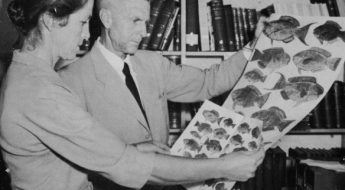
Leave a Comment